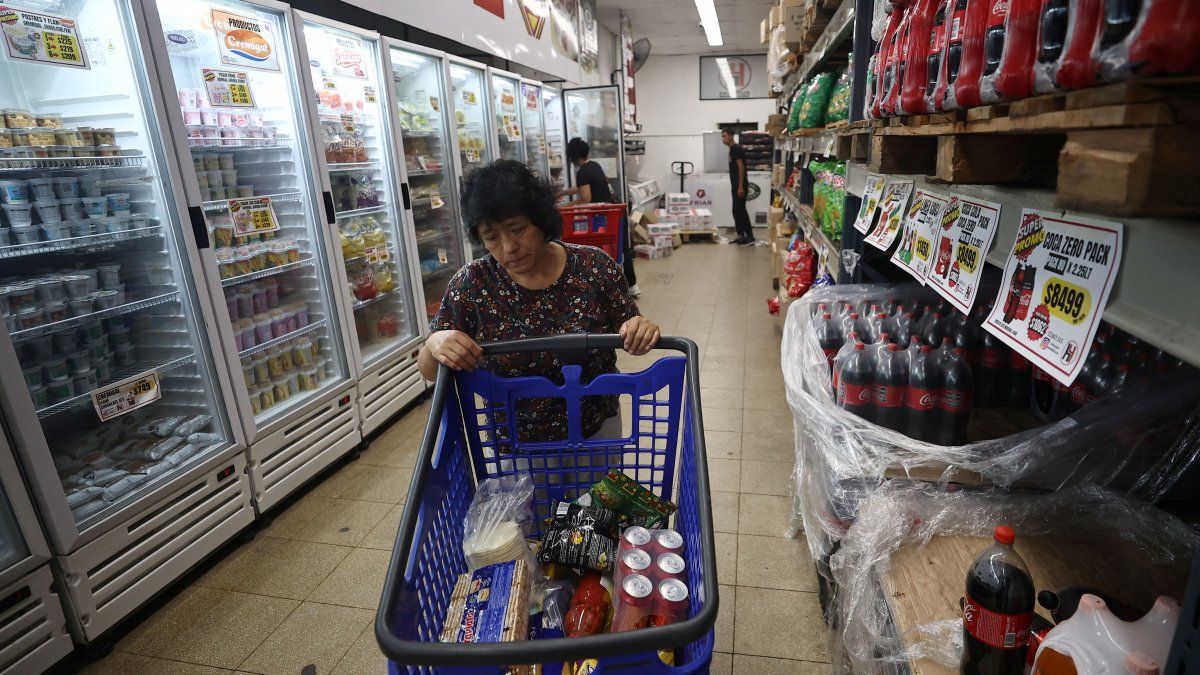While the macroeconomy begins to show signs of encouraging data, such as financial and trade surpluses, the social climate becomes complex with poverty hovering around 60%.
The electoral promises included the dollarization with the closure of the central bank (BCRA), plus the elimination of the fiscal deficit and the inflationary spray.
Argentina will advance in a system of coin competition that includes the devalued local peso, the president recently said in an interview, after a meeting with a senior official of the International Monetary Fund (IMF).
At the same time, the BCRA reaffirms its dollar buying streak in search of leveling net reserves in the short term, together with strict exchange control.
The Government reaches the famous “twin surpluses”: the market’s view
“Hand in hand with a strong liquefaction of public spendingthe devaluation and the maintenance of the stocks (exchange control), the Government managed to achieve a goal that Argentina had not achieved for 16 years: ‘twin surplus’, that is, a surplus in fiscal accounts and in foreign trade,” highlighted the IEB Group.
“We found that the rreduction in public spending together with the monetary squeeze from the central bank (BCRA) are accompanied by a reduction in the level of economic activity that (…) is functional to control inflation, facilitating the relative price accommodation“, he noted.
“After several decades of high fiscal deficit and inflation, and economic stagnation, markets and society require a very strong signal that this time the economic policy will be different, to anchor inflationary expectations and prepare the ground for new investments,” said the Mediterranean Foundation.
He noted that “Argentina does not have access to international credit marketsand in the near future financing will be required for investment and to achieve ‘rollover’ of the debt with private external creditors, especially from the year 2025, when these obligations grow significantly.”
“He fiscal deficit has ceased to be a source of emissions for the central bank, Even the Treasury has made progress in repurchasing public securities in the monetary authority’s portfolio, which has been contractionary in terms of the pesos in circulation. Another important source of absorption has been the ‘Bopreal’ tenders,” said Eugenio Marí, chief economist of the Libertad y Progreso Foundation.
Investments: in search of profitable instruments in pesos
“One of the problems facing the market is the lack of profitable investment instruments in pesos, That’s why the interest on the ‘Bopreal’ bonds (to cancel imports), because now what pays the most in dollars can be a ‘Negotiable Obligation’ (ON) at 10% per year, very little compared to the 5% that a bond pays. United States,” explained a financial advisor from a Buenos Aires brokerage.
“Currently, the monetary policy rate stands at 8.3% monthlya number much lower than the inflationary level of close to 20% per month. This makes it difficult to find fixed income instruments that allow you to beat inflation, or at least in the short term,” said Delphos Investment.
“In these (cyclical) conditions it is impossible to dollarize. “It is a government that seems to leave the door open to dollarization, economic policy in some way does not contradict that possibility, but at the same time those of us who understand economics realize that it is very difficult to do so in this context,” declared the economist. Martin Rapetti.
“To have a respectable yield (the ‘AL30’ bond) should yield between 12% and 18% annually, In this way, the country risk would collapse and Argentina would be on the verge of carrying out a ‘repo’ operation that would allow the entry of dollars via financing,” estimated analyst Salvador Di Stefano.
dollar bonds.jpg
The market observes a lack of profitable investment instruments in pesos
Inflation: the view of economists
“Our estimate for February shows a core inflation of 13% (…) It will still depend on how the (exchange rate) gap ends in the remainder of the month. Going forward, inflation would be below 10% only in May,” estimated the Neix brokerage.
“This scenario of decrease in nominality It is a consequence of a reduction in the gap, a stagnant level of activity, a gradually reducing inertia and a possible regime change in expectations. Obviouslyif the exchange rate jumps again and the inflationary inertia is not broken, the price variation would rise again“, said.
“Get to a Single-digit inflation may be delayed because you still have expected jumps in key prices,” said economist Luis Secco.
“Faced with an inflationary flash, those most affected are those who have the least, income policies try to mitigate the consequences. The inflation of December, January and probably February are those that indicate that the Most of the adjustment is paid by the middle and lower class“said analyst Christian Buteler.
Source: Ambito




